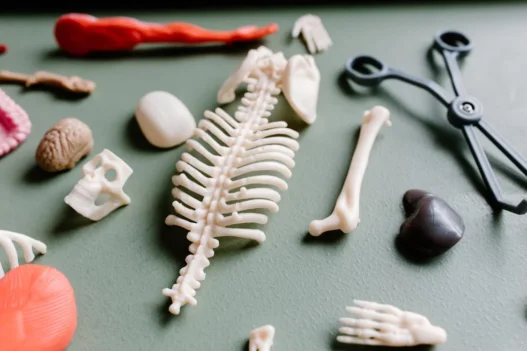0SSG34Z refers to a surgical procedure that involves repositioning the left ankle joint using an internal fixation device in a minimally invasive manner. This method aims to align and stabilize the ankle joint, typically done through small incisions to reduce recovery time and minimize scarring.
Table of Contents:
- 🔎 Clinical Indication
- 📋 Preparation
- 📖 Methodology
- 🩹 Recovery
- 🚨 Complexity & Risk
- 🔀 Similar Procedures
🔎 Clinical Indication
0SSG34Z, or the procedure to reposition the left ankle joint with an internal fixation device using a percutaneous approach, may be performed in cases where there is a dislocation or fracture of the ankle joint that requires stabilization. This procedure involves realigning the bones of the ankle joint and securing them in place with a device inserted through the skin.
By performing this procedure, surgeons can restore proper alignment and stability to the left ankle joint, which can help reduce pain, improve function, and promote healing. This minimally invasive approach can result in faster recovery times and less scarring compared to traditional open surgery methods.
📋 Preparation
Before undergoing the procedure 0SSG34Z to reposition the left ankle joint with an internal fixation device using a percutaneous approach, the patient will typically need to undergo a thorough physical examination and imaging studies to assess the extent of the injury. This will help the medical team determine the best approach for the procedure. Additionally, the patient may need to fast for a certain period of time before the surgery to reduce the risk of complications during the procedure.
The patient may also be instructed to stop taking certain medications, such as blood thinners, in the days leading up to the procedure to minimize the risk of excessive bleeding during the surgery. It is important for the patient to follow these instructions carefully to ensure the best possible outcome. Finally, the patient may meet with the anesthesia team to discuss the type of anesthesia that will be used during the procedure and address any concerns or questions about the anesthesia process. This pre-operative preparation helps ensure that the patient is in optimal condition for the procedure and minimizes the risks associated with the surgery.
📖 Methodology
During OSG34Z, a surgical procedure is performed to reposition the left ankle joint using an internal fixation device. This involves making a small incision near the ankle and inserting the device to stabilize the joint.
The percutaneous approach means that the surgery is done through the skin, typically resulting in less scarring and a quicker recovery time. This procedure is commonly used to treat fractures or other injuries to the left ankle joint that require stabilization and realignment.
🩹 Recovery
After undergoing a SSG34Z procedure to reposition the left ankle joint with an internal fixation device, the patient will typically experience a recovery period that includes pain management and physical therapy. The internal fixation device helps to stabilize the ankle joint as it heals.
During the recovery process, it is important for the patient to follow the doctor’s recommended treatment plan, which may involve wearing a brace or cast to support the healing joint. Physical therapy will help restore mobility and strength to the ankle, allowing the patient to regain full function.
🚨 Complexity & Risk
Performing 0SSG34Z, which involves repositioning the left ankle joint with an internal fixation device using a percutaneous approach, is a complex procedure that requires a high level of skill and precision.
One potential risk to patients during this procedure is the possibility of injuring nearby nerves, blood vessels, or other anatomical structures in the ankle area. This can result in complications such as nerve damage, excessive bleeding, or infection.
It is crucial for healthcare providers to carefully assess the patient’s condition, consider alternative treatment options, and ensure proper post-operative care to minimize the risks associated with performing 0SSG34Z. Communication between the surgical team and the patient is key in managing expectations and addressing any concerns before, during, and after the procedure.
🔀 Similar Procedures
Another medical procedure similar to 0SSG34Z is the Reposition Right Ankle Joint with Internal Fixation Device, Percutaneous Approach. This procedure also involves repositioning a dislocated ankle joint using a minimally invasive approach with the placement of an internal fixation device to stabilize the joint.
The Reposition Right Ankle Joint procedure is similar to 0SSG34Z in that both involve addressing dislocated ankle joints through a percutaneous approach. By using small incisions and specialized tools, the surgeon is able to reposition the joint and fixate it with hardware to promote proper healing and stability.
Like 0SSG34Z, the Reposition Right Ankle Joint procedure offers the benefits of faster recovery, reduced risk of complications, and improved overall outcomes compared to traditional open surgery. This minimally invasive approach can lead to less pain, scarring, and a shorter hospital stay for patients undergoing ankle joint repositioning.

